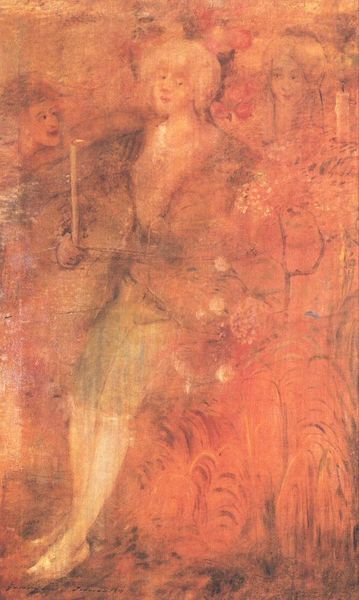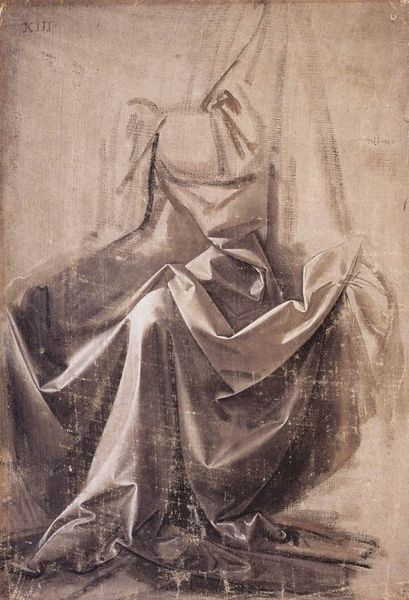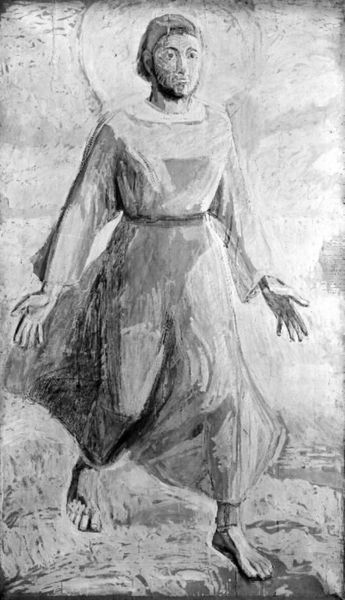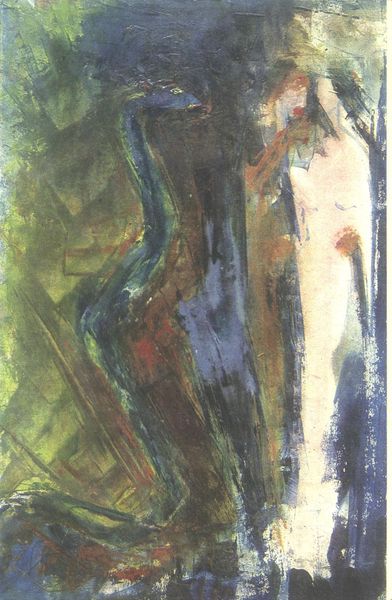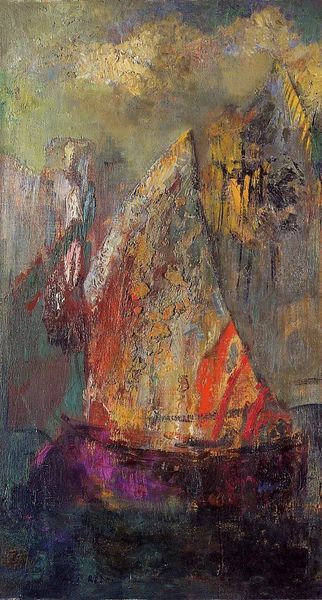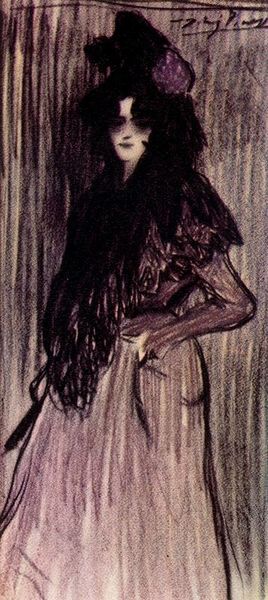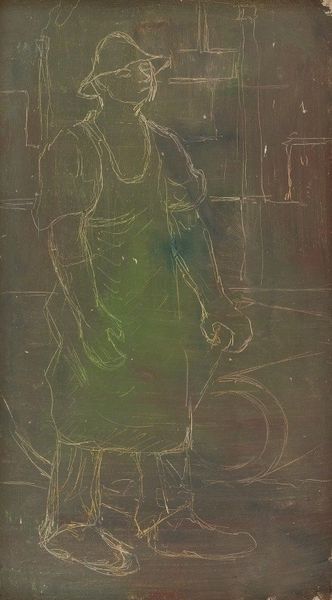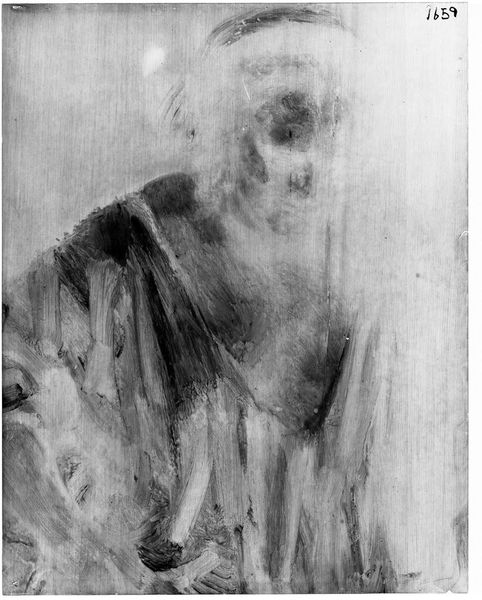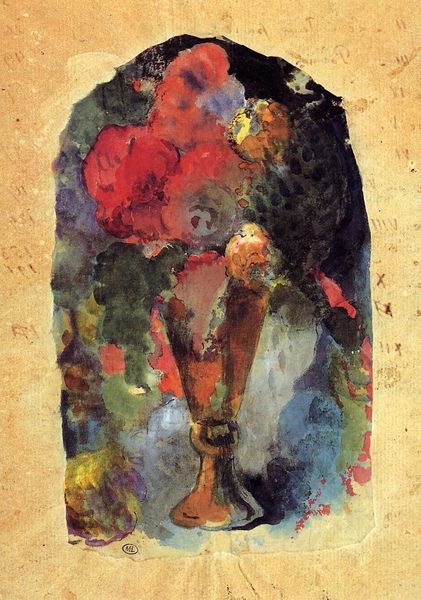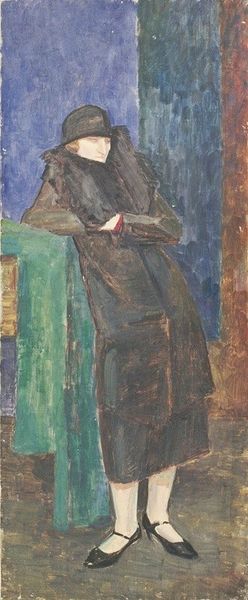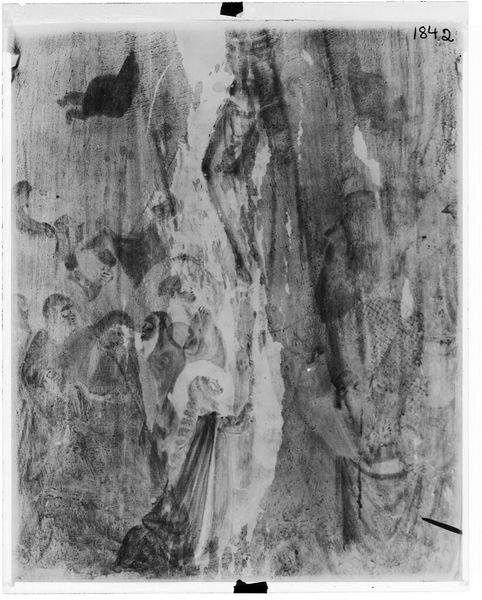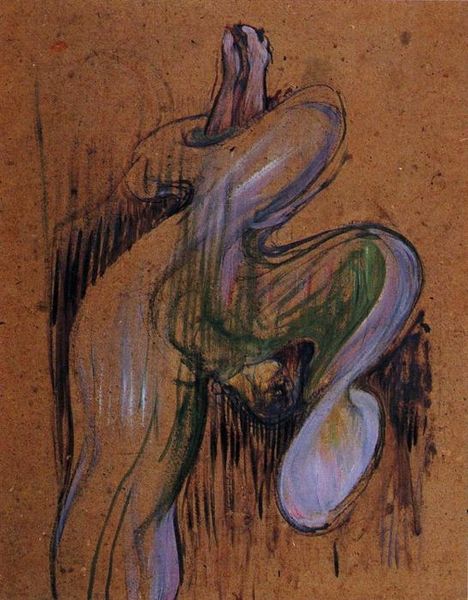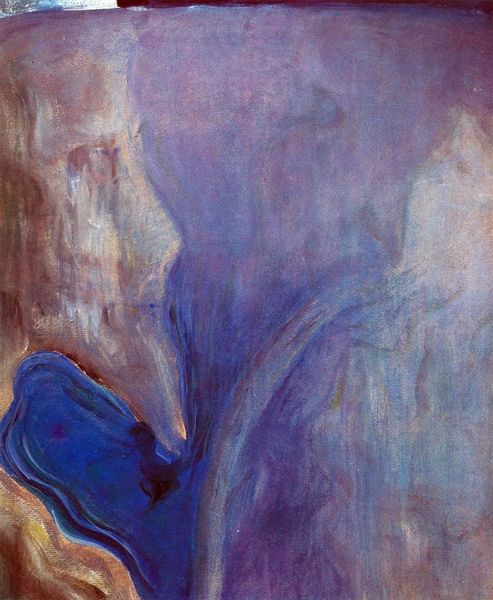
painting, pastel
#
painting
#
impressionism
#
form
#
france
#
pastel
Copyright: Public domain
Editor: Here we have Degas’s "Vestment on a Chair," created in 1887, using pastel and painting. It's a rather ghostly depiction, almost abstract in its blurring of the vestment and the chair itself. What do you see in this piece, especially beyond the surface representation? Curator: What strikes me immediately is Degas's preoccupation with the unseen labor involved in the creation and care of such a garment. Consider the vestment itself – it signifies a specific role, perhaps religious, within a structured system of production and consumption. Think of the materials, the craftspeople involved in its creation, the economic exchange required. This is more than just an abandoned object; it’s a trace of human effort, temporarily paused. Editor: So, you see the vestment not just as fabric but as a signifier of broader systems? The blurred impressionistic style feels intentional, hiding the details. Curator: Exactly! Degas's application of pastel, so delicate and transient, actually highlights the materiality. The labor, usually concealed behind the grandeur of the vestment’s purpose, is laid bare. Is the artist perhaps suggesting the ultimate indifference of materials, destined for wear and decay, irrespective of their initial symbolic power? We're forced to consider the production line and the material consequences. Editor: That's a fascinating take. I had only seen the fleeting beauty of the Impressionist style, but now I see a deeper engagement with the work involved. Thank you. Curator: Indeed. The piece challenges our understanding of high art, demanding consideration of humble, material reality. I’ve learned new ways to look at "Vestment on a Chair."
Comments
No comments
Be the first to comment and join the conversation on the ultimate creative platform.
